Kintai Bridge, One of the Three Major Bridges in Japan
Kintai Bridge is located in Iwakuni, Yamaguchi Prefecture. It is one of the three major bridges in Japan and known as a tourist spot in Iwakuni. It is a good idea to visit the bridge after seeing Itsukushima Shrine in Miyajima, Hiroshima Prefecture because it takes only about an hour from Miyajima to go to the bridge.

Kintai Bridge is a wooden arch bridge with an ingenious design, and it is said to have a perfect structure from the viewpoint of modern bridge engineering. From underneath you can see the complicated structure of the bridge. How interesting! It is also amazing that the bridge is made of wood.

When I saw the bridge I was overwhelmed by the dynamic arches, and when I walked on the bridge I felt it was steeper than I imagined. I saw a great view of the river from the bridge. It was very fun, but I suppose some people feel scared of walking on the bridge.
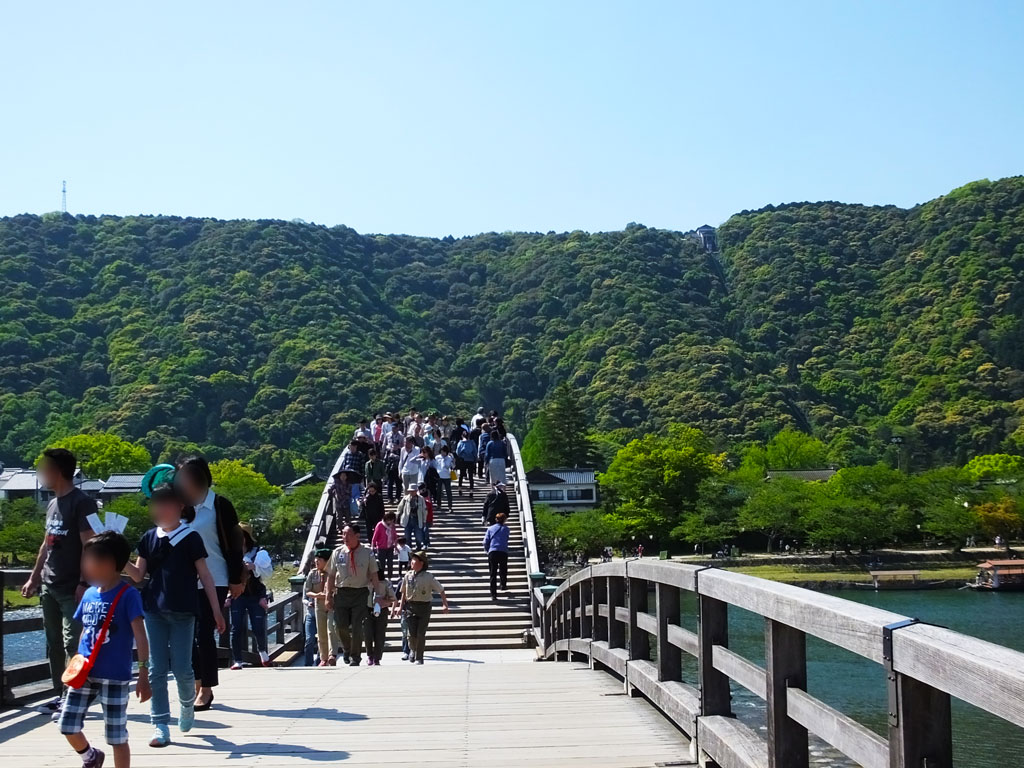
Kintai Bridge is surrounded by nature, so you can enjoy the area in every season. Cherry blossoms in the spring, colored leaves in the autumn and the snow mountains in the winter are beautiful and worth seeing. In the summer, there are a fireworks display and a show that uses the traditional Japanese fishing method, cormorant fishing (Japanese: ukai) in the river.
The History of Kintai Bridge
In 1673, a lord of Iwakuni Domain, Hiroyoshi Kikkawa built an arch bridge, but soon it was washed away by the river. The bridge, which was much improved, was reconstructed in the following year, and it was maintained for 276 years. It is said that people started calling the bridge “Kintai Bridge” in the Meiji Period (1868-1912). In 1950, there was a huge flood caused by a typhoon and the bridge was carried away again. The bridge was rebuilt in 1953, and it has been maintained since then. (Deteriorated parts were replaced from 2001 to 2004.) In old days only samurai and a few merchants could use the bridge, and it was not allowed for ordinary people to walk on it. I’m glad that today anyone can cross Kintai Bridge.
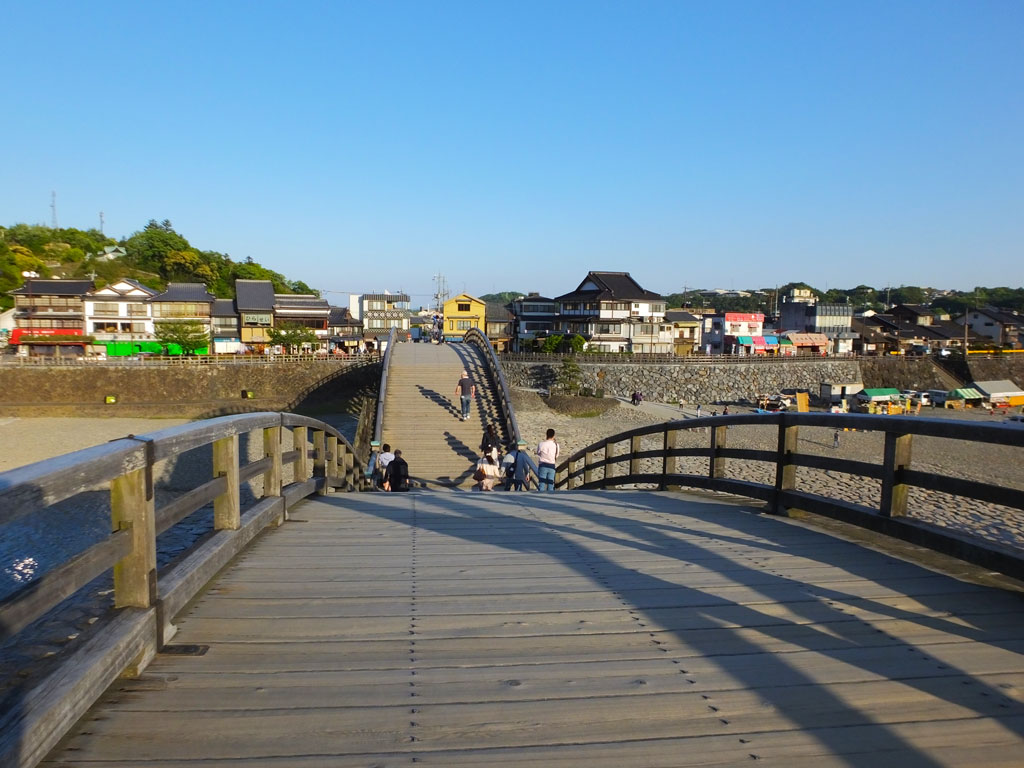
A Discount Ticket Highly Recommended
A round‐trip ticket for Kintai Bridge is 300 yen. The fee is used to maintain the bridge. Anyway, walking on the bridge is must to do. You can go up Mount Shiroyama by cable car and view the bridge from above and go to Iwakuni Castle, too. If you are interested in it, you must buy a discount ticket for 940 yen at a bus terminal called Kintai Bridge Bus Center. It is cheaper by 170 yen, and moreover, you can get a 20 percent discount on the admission of Iwakuni Art Museum, and a 100-yen discount on the admission of Kikkawa Museum.
7 Interesting Places in the Area
Cross Kintai Bridge, and there will be many places to visit. Let me introduce you 7 interesting spots briefly.
- Iwakuni Castle
Iwakuni Castle is located on the mountain and the altitude is approximately 200 meters. From there you can view Kintai Bridge and Nishiki River, and when the weather permitted, you can see Seto Inland Sea, too.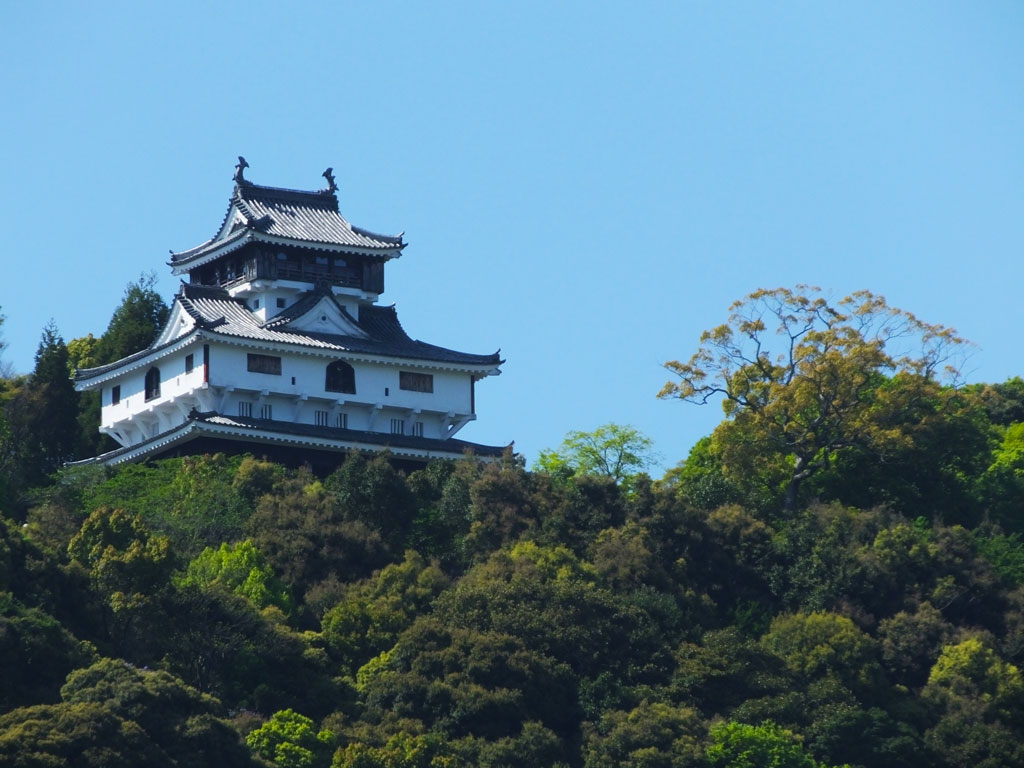
Iwakuni Castle 
the view of Kintai Bridge and Nishiki River - Iwakuni White Snake Museum
In Iwakuni White Snake Museum, you can see white snakes and take a picture of them. (Don’t use a flash.) There are skeletal specimens, interactive exhibits, videos and so on, too. The white snakes have been found in Iwakuni City since ancient times and they have been considered as messengers of a deity. The museum was renovated in 2016.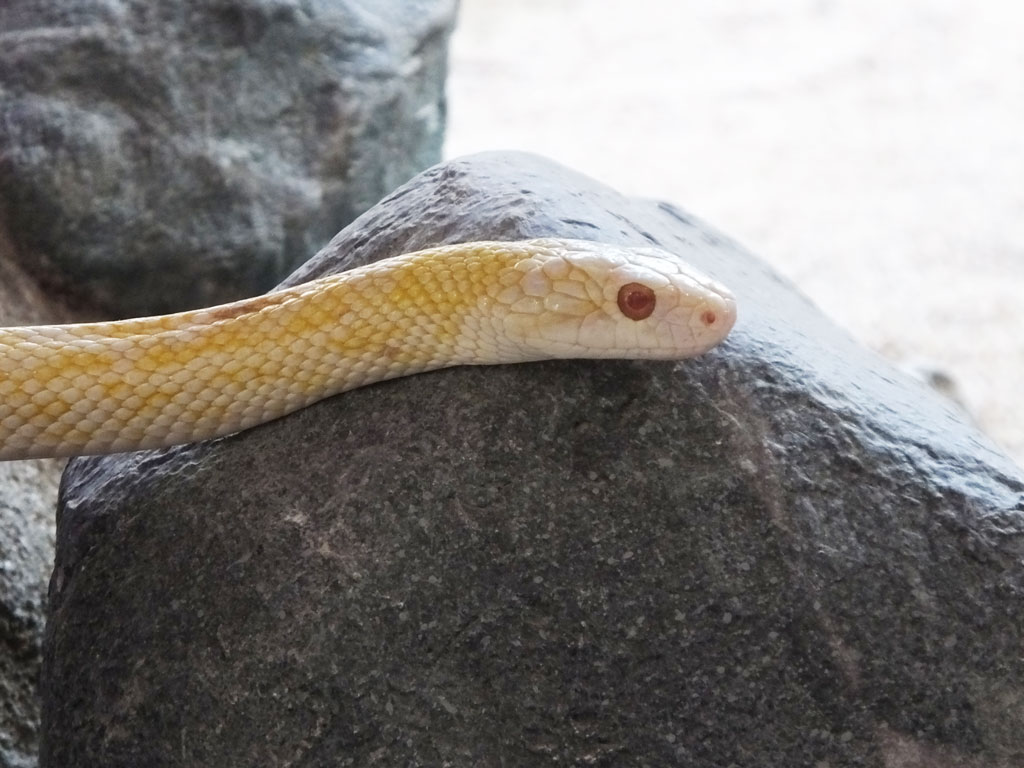
a white snake 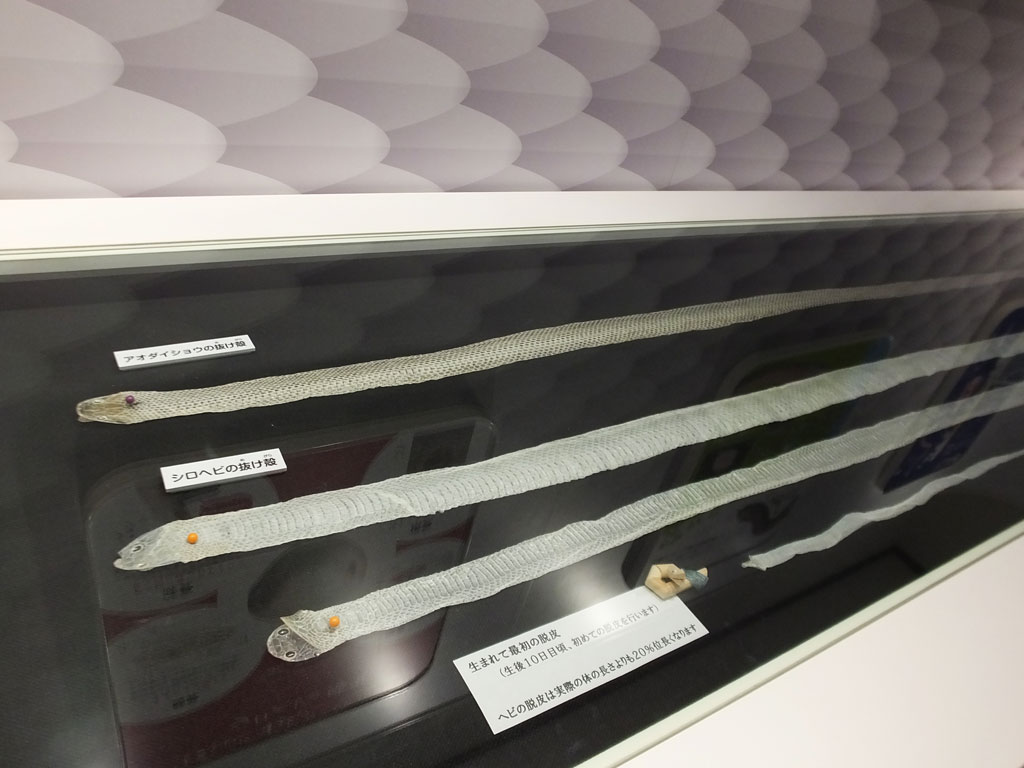
a display of cast‐off skins - Musashi (soft-serve ice cream shop)
Musashi is a soft-serve ice cream shop with the best variety in Japan. They have more than 160 kinds of flavors (in 2018) and the number of flavors is increasing. You need to wait in line to get soft-serve ice cream, but it is worth trying.

Musashi - Kikko Park
Kikko Park is a wonderful park that is designated as one of Japan’s Top 100 Historical Parks. It is located at the site of a former high school. Perhaps you can see a rainbow over the fountain in the middle of the park. There are beautiful flower beds and trees whose leaves shine gold in the autumn, too.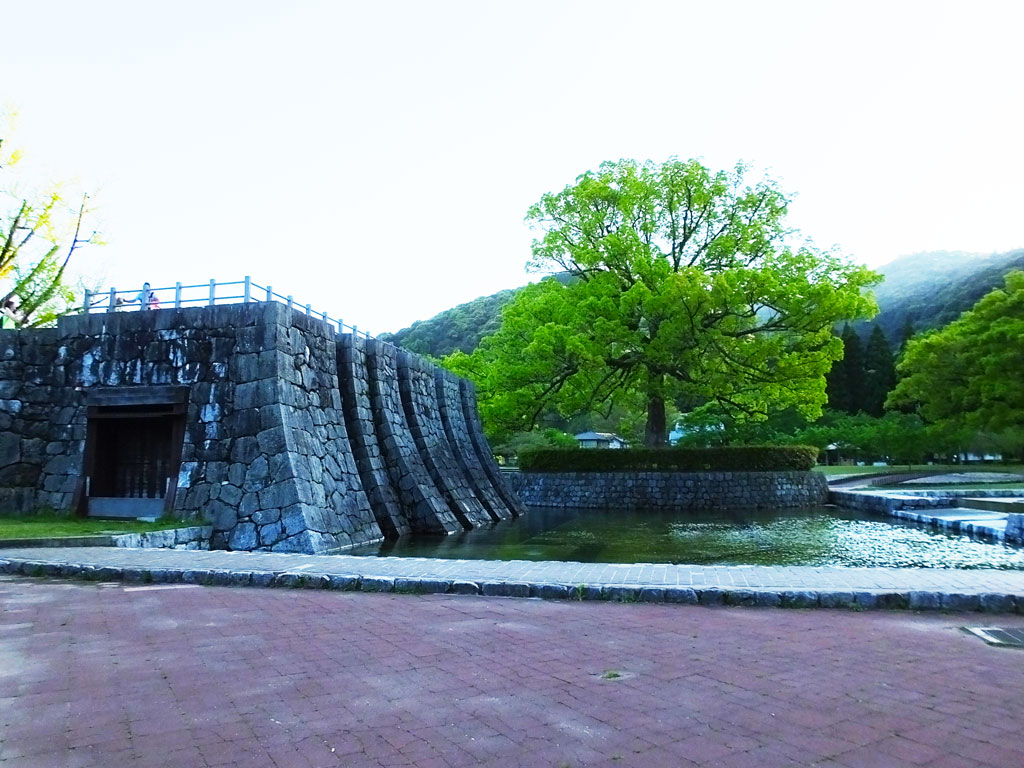
Kikko Park 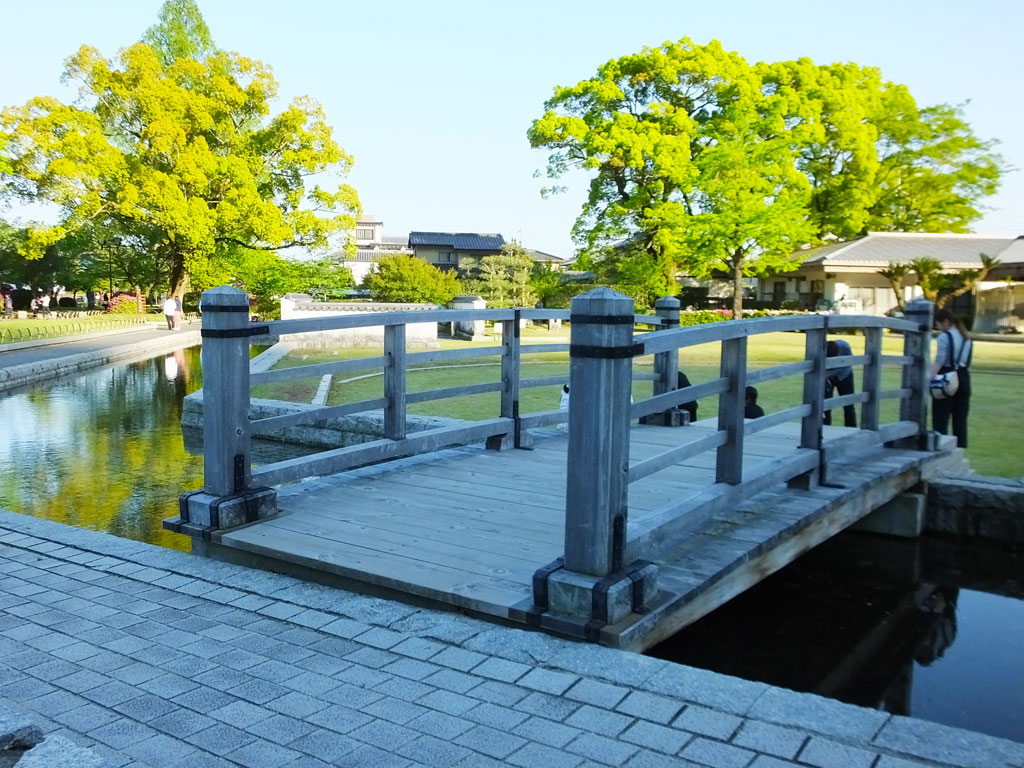
In the park, there is a statue of Hiroyoshi Kikkawa, and a former residence of the Mekata family, who were engaged by Motoharu Kikkawa. You can also see the gate of the residence of the Kagawa family who were top-ranking samurai officials.
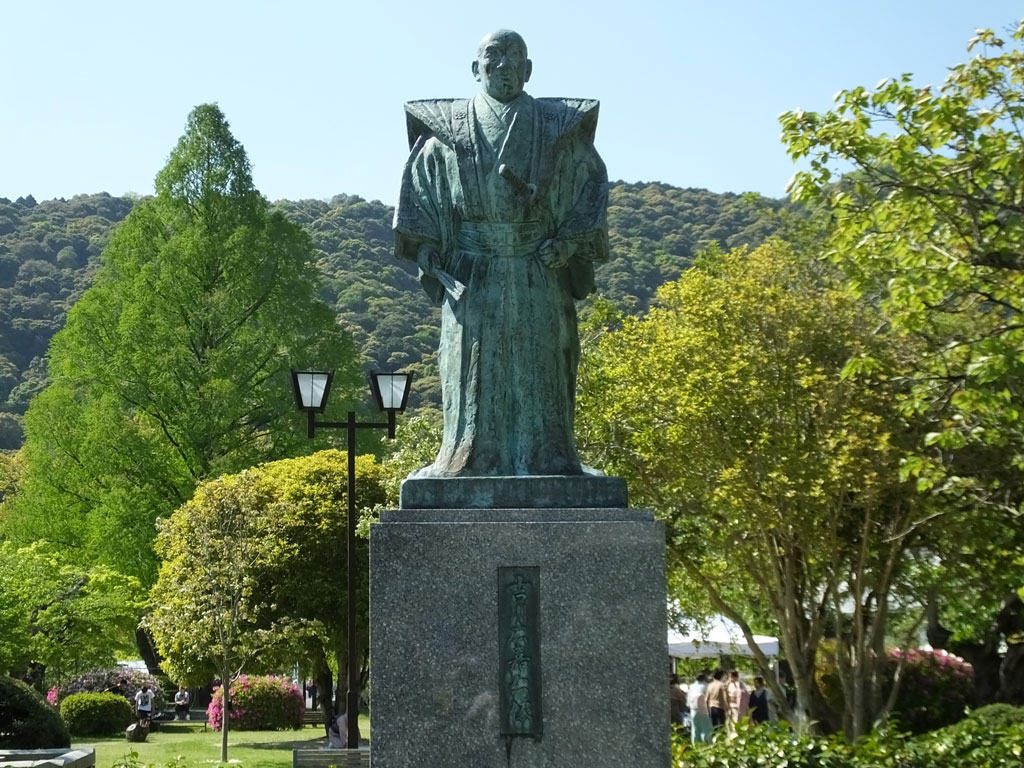
the statue of Hiroyoshi Kikkawa - Iwakuni Art Museum
Iwakuni Art Museum is a unique museum that is famous for its armors and weapons of samurai. They have pottery, glass works and old writings from the Nara Period (710-794) to the Edo Period (1603-1868), too. There are about 6,000 items and you can see 200 of them at any time. They change what to display four times in a year.

Iwakuni Art Museum - Kikkawa Museum
Kikkawa Museum has many historical materials and artifacts that have been passed down from generation to generation in the Kikkawa family for about 800 years. There are about 7,000 items, and about 2,500 historical materials were designated as Important Cultural Properties. The exhibits are changed four times a year, just like Iwakuni Art Museum. Near the museum, there is a statue of a prominent swordsman, Kojiro Sasaki.
Kikkawa Historical Museum 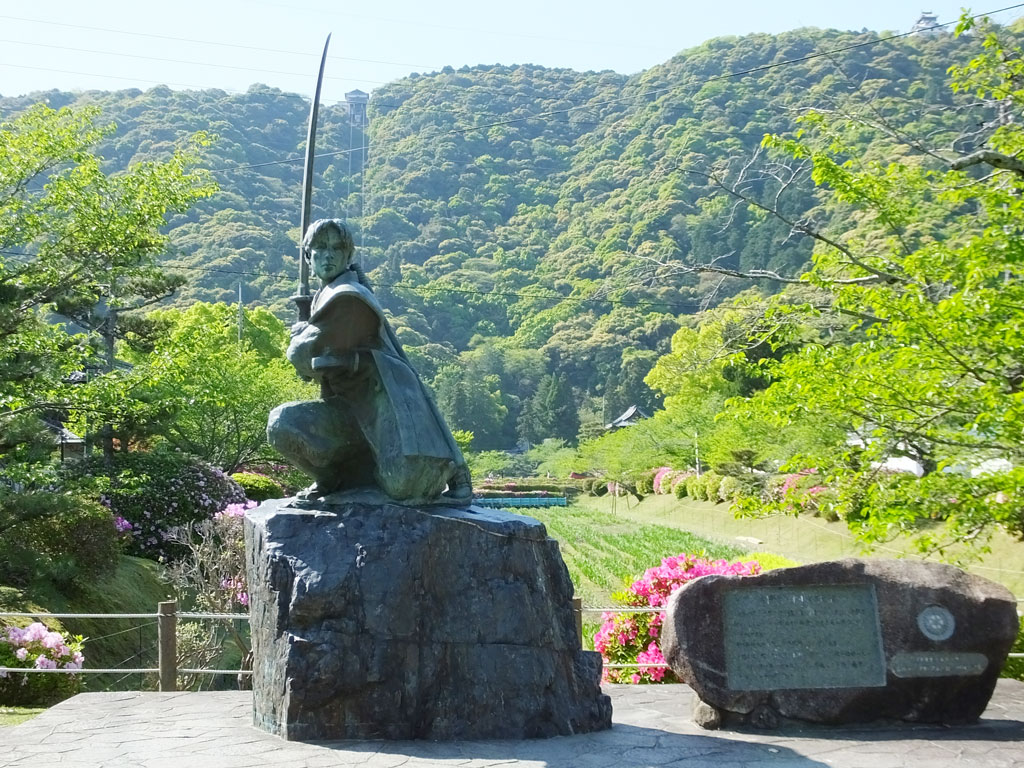
the statue of Kojiro Sasaki - Iwakuni Chokokan
Iwakuni Chokokan is a museum where you can see artifacts and old documents in the Edo Period. Also, there are documents about Kintai Bridge and a portion of the bridge that was carried away by the river. The admission is free. In front of the museum, there is a peony garden and it is beautiful from late April to early May.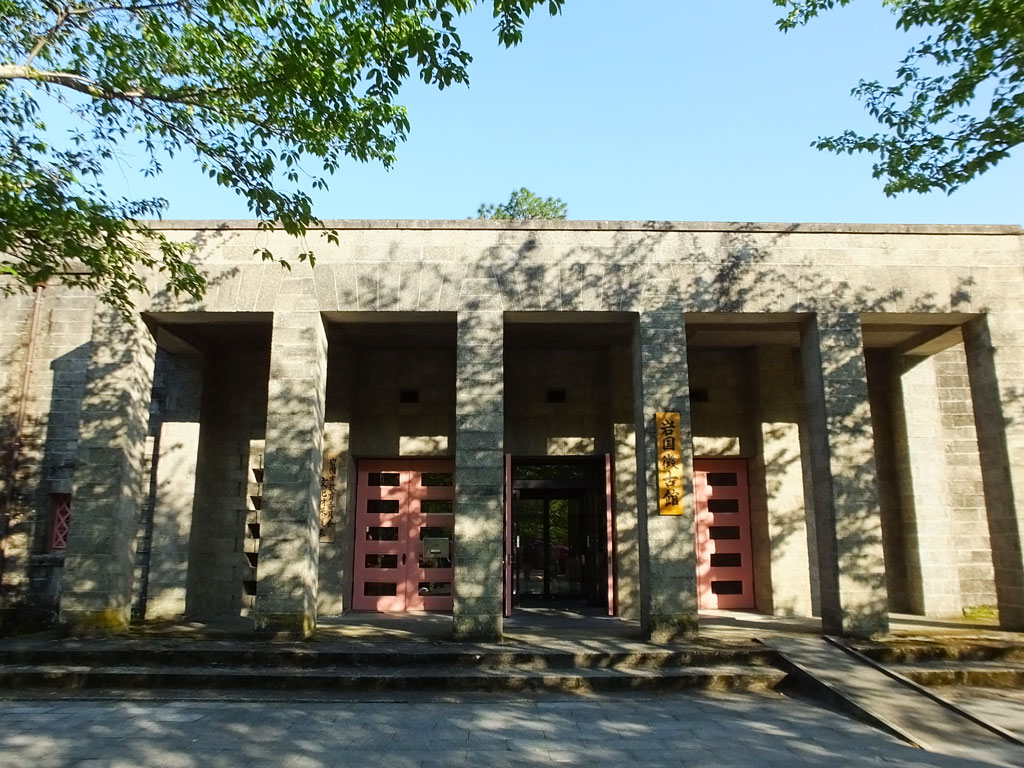
Iwakuni Chokokan 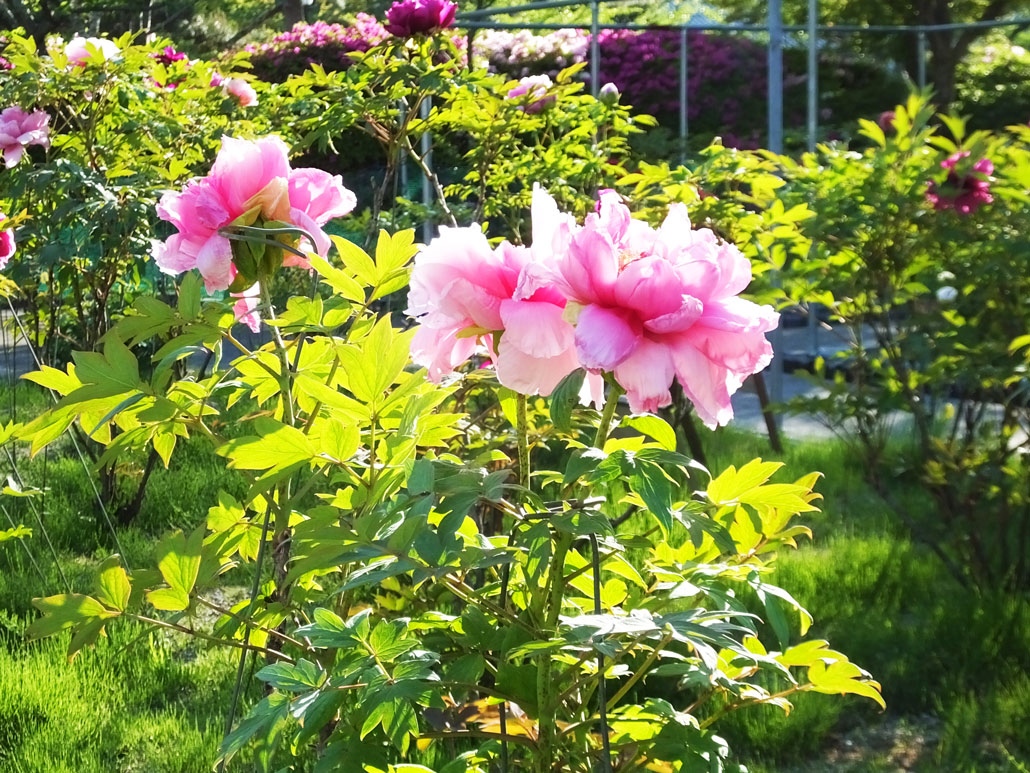
in the peony garden
【Kintai Bridge Area】
1 Iwakuni, Iwakuni City, Yamaguchi
Access It takes 20 minutes and costs 300 yen from Iwakuni Station by bus.
It takes 15 minutes and costs 350 yen from Shin-Iwakuni Station by bus.
URL:http://kintaikyo.iwakuni-city.net/en/
